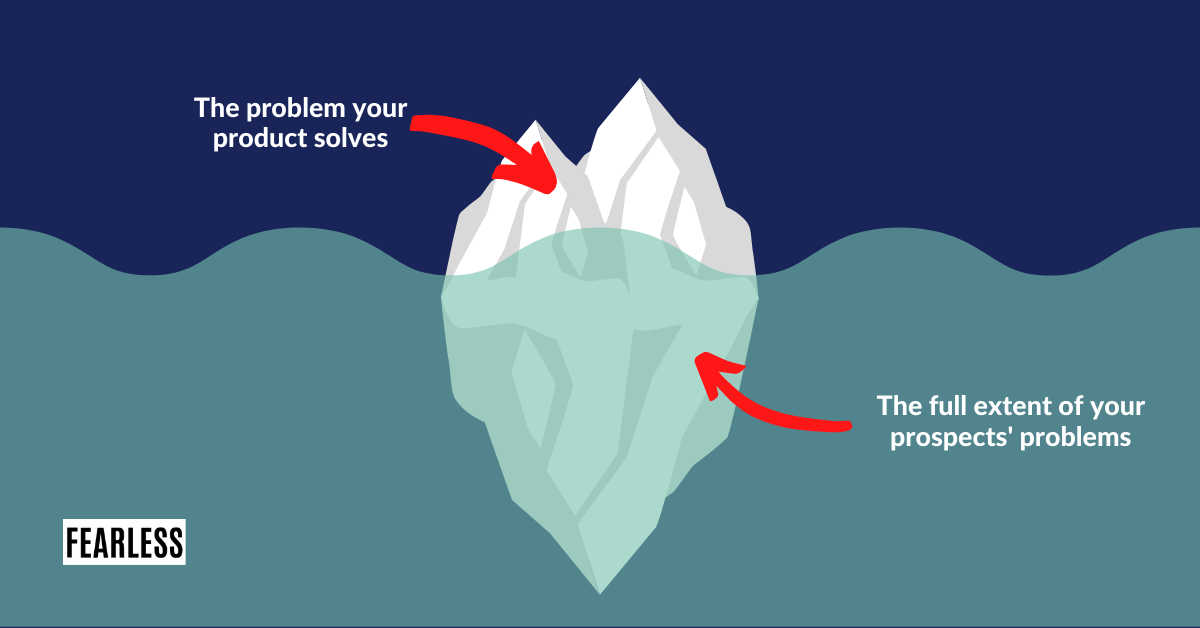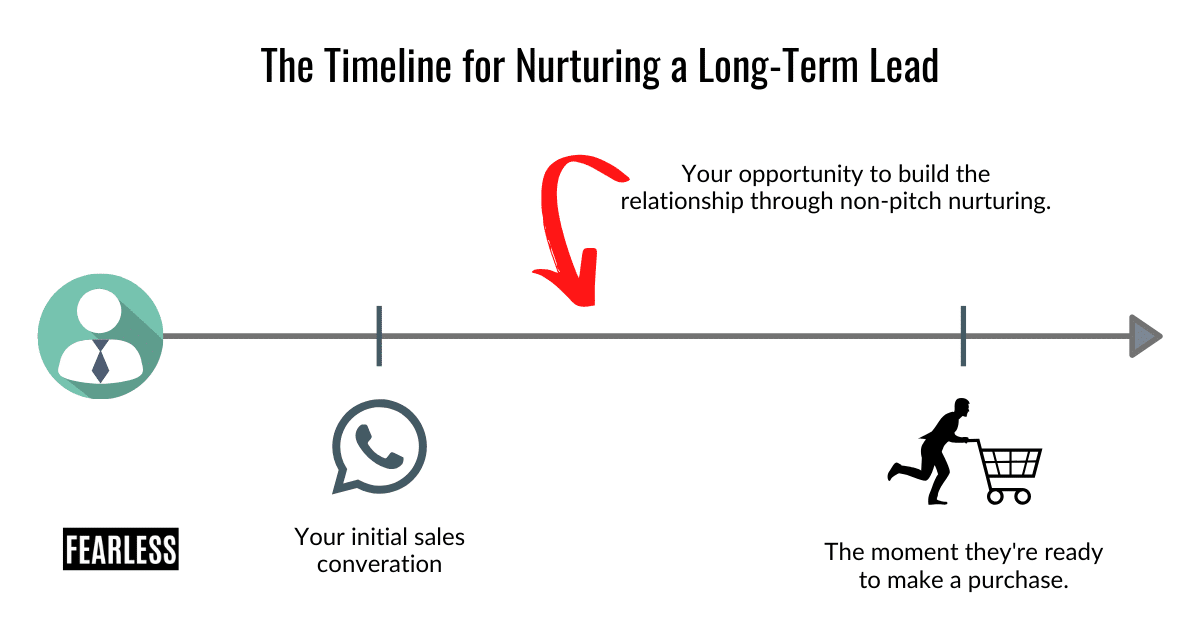The main goal of a sales conversation is to solve prospect problems, and help them decide which solution is right for them.
When they hear that, many salespeople intuitively go straight to “and the solution is our product.” But there are often times when your product is not the solution:
- The price point isn’t right, and investing that much money in a tool they aren’t positioned to leverage could end up hurting the business
- The value of the product doesn’t align with the prospect’s real need
- The push to buy the product could kill the sales relationship before it has a chance to get off the ground
In a previous post, we discussed the importance of leveraging content in your sales communications, the value that comes from that practice, and how you as the salesperson can reap the benefits.
But one that we didn’t discuss — and that I’m going to talk about here — is the benefit of leveraging content to solve prospects’ problems without selling to them.
Please, don’t turn off. Stick with me.
I know this may be anathema to you. And many salespeople may not understand the full value of what I’m talking about. That’s alright. That’s the point of this post.
When you can figure out ways to solve prospect problems without selling to them, it doesn’t hurt your sales process. On the contrary, it becomes another tool in the tool belt for your sales process that you can use when it’s necessary.
Ultimately, refraining from making a sales pitch isn’t a sign of a missed opportunity. On the contrary, it’s the sign of a good and discerning salesperson.
1. Prospect problems are often more extensive than your solution.
Your product or service is built to solve a specific problem or set of problems. When you’re a new company especially, that problem is often narrow and well-defined.
This makes sense. Being highly differentiated is key to standing out and attracting customers who are highly likely to purchase your product.
However, there’s a flip side. While you define your product or service narrowly, the problems your prospects face are rarely as narrow. Often you’ll hear things like “we need to streamline our business processes,” or “we need to increase return on investment.”
Your prospects rarely define their pain points as narrowly as the solution that you’re offering to them.
If you want to be helpful to their situation, then it’s important that you understand the full scope of their problems. Your product may solve one particular aspect of it, but you can also send them content, both original and curated, to help address the other issues they’re facing.
When you focus on understanding the full extent of the problem a prospect faces, you’re demonstrating that you’re interested in helping them, not just making a sale. Your product may only solve one issue, but you can still demonstrate upfront that you want to help them achieve their goals first and foremost.
Never underestimate the value of a positive prospect. They may become a customer. But whether or not they do, they’ll certainly be talking about you with colleagues, and your overall reputation in your market will only become more positive.
2. There’s more than one way to solve prospect problems.
You may think you have the best product in the market. But I assure you, every one of your competitors thinks the exact same thing.
Your ideal buyer isn’t just the person who can use your product. It’s the person who can get the most use out of that product. The person who will reap the most value from it.
There could be a prospect who would use it for six months and then cancel. If there’s no potential for a long-term value, then the cost of acquisition is likely to outpace the value you get from the deal.
Besides, if you’re prioritizing prospects, you certainly want to go after the people who are likely to get the most value out of the products you sell. There’s the opportunity cost to consider.
But for those who you don’t want to let go — maybe there’s potential opportunity down the road — there are some other ways to solve their immediate problem in a way that’s better than your product:
- Content. The prospect problem could be that they need information, and your content can help provide that.
- Referrals. There are so many companies out there who may be a better fit for what the prospect needs than what you have to offer. Giving a referral may be the best option to solve prospect problems.
- Tools. There may be times where the prospect doesn’t need your product, but there are tools out there — free or low-cost — that could help them.
Don’t limit your interactions to only the people that are going to buy now. It’s always possible that there’s a reference or new opportunity down the line.
Instead, focus on solving prospects’ problems in the best way possible for them. As time goes on, that will pay off.
3. Long-term prospects require different handling than short-term.
When you leverage content to solve prospect problems, there are two potential ways to do so.
For someone who is likely to buy, the content is there to entice them to think about their problem and consider alternative solutions to it. It’s going to guide your prospect along their buyer’s journey, ultimately leading them to a purchasing decision.
But there are people who aren’t ready to buy, at least not in the short term. There still is a valuable role for content there — and that’s in solving the immediate problem and building a positive rapport with them.
You have a limited amount of time to sell. Plus, there’s a certain quota you have to hit within that time frame. So you want to prioritize those that are likely to close rather quickly.
But for those who aren’t likely to buy in the short term, you never know how the relationship could evolve:
- They could switch jobs and the new employer is a better fit
- Their situation within their company could change, leading them to solve different problems
- They could run into someone who is a good fit, leading to the potential for a referral
For these long-term prospects, building a positive relationship right now could pay off later when the situation changes and it’s time to do business with them.
Not every deal is going to close overnight. And larger opportunities are certainly going to take time to close.
That’s why there’s no such thing as a wasted sales interaction. Every time you can provide value is important to building that relationship and opening more opportunities for a successful deal.
As a salesperson, content helps you solve prospect problems with a simple copy and paste — saving both your time and the prospect’s.
4. You need to build trust with your prospects.
Trust and rapport are critical to an effective sale. If you can build that trust, you can increase your chances of closing the deal.
When you as a salesperson reach out to a prospect, that person knows that your objective is to close a deal.
And while your overall objective is certainly to close more deals and bring in revenue, you as a modern salesperson know that the most efficient way to do that is to solve problems for these people.
The ball is in your court as to whether or not you can build that trust.
When you solve prospect problems without selling, that’s a huge step in trust. It demonstrates that you truly have their best interests in mind — you’re not just trying to close a good deal.
Trust doesn’t just lead to sales, it leads to long-term sales. And long-term sales help set up your business for success not just this month or quarter, but in the months and years to come.








